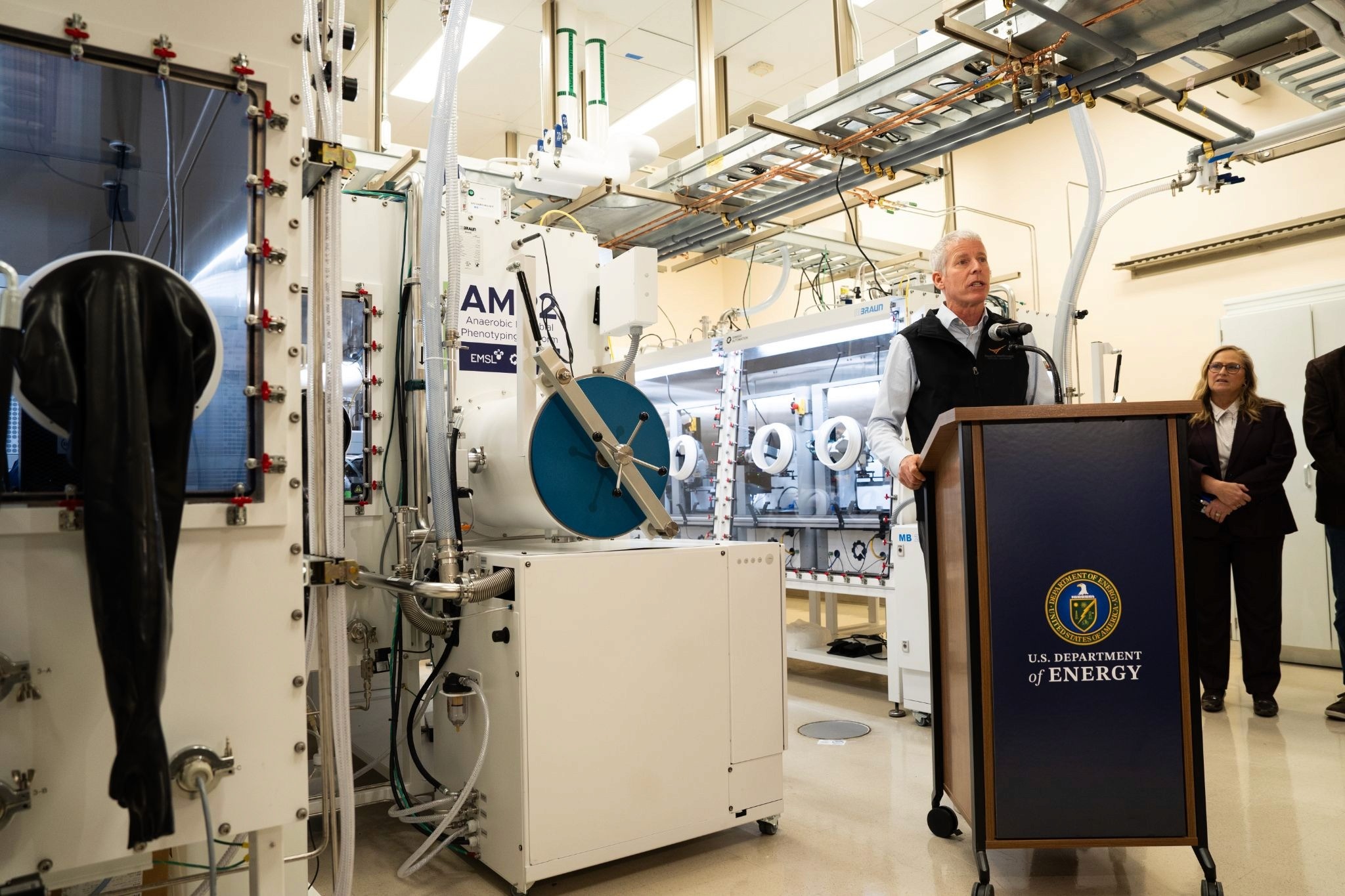From Ice to Life: The Revolutionary Cryo-EM View of an RNA Machine
Researchers unveil the first atomic structure of an RNA replicase using cryo-EM, shedding light on the molecular machinery that might have kick-started life on Earth
Jan 21, 2024
The picture shows an RNA polymerase ribozyme thought to be implicated in the origin of life. The ribozyme is shown frozen in ice to symbolize how it was frozen in time for imaging and how it works best under ice-cold conditions. The active site is highlighted by a yellow/red light and the proposed position of the template-product helix is shown in transparent. [Rune Kidmose]
Venturing into the molecular labyrinth of life's origins, scientists have made a landmark discovery, unveiling the intricate structure of an RNA replicase. This revelation, achieved through the cutting-edge technology of cryogenic electron microscopy, is more than a mere scientific triumph; it's a time capsule unlocking secrets of the RNA world, a hypothesized era when self-replicating RNA molecules laid the groundwork for all known forms of life. The groundbreaking study was published recently in PNAS through a collaborative effort between researchers from Aarhus University and MRC LMB Cambridge.
The team, led by Ebbe S. Andersen and Philipp Holliger, successfully utilized cryogenic electron microscopy (cryo-EM) to capture the first atomic structure of an RNA replicase. This replicase, developed in the Holliger lab, is adept at copying long RNA strands using nucleotide triplets in eutectic ice phases. The resulting structure bears an uncanny resemblance to protein-based polymerases, with domains organized similarly to an open hand, crucial for template binding, polymerization, and substrate discrimination.
Philipp Holliger, program leader at MRC LMB Cambridge, expressed his astonishment at the findings: "It was surprising to find that a ribozyme that we evolved artificially in the test tube would display features of naturally occurring protein polymerases. This indicates that evolution can discover convergent molecular solutions no matter if the material is RNA or protein."
Furthering the research, a comprehensive mutational study highlighted essential elements of the RNA structure. This study, while unable to visualize the replicase in active RNA copying, paved the way for constructing a model consistent with all experimental data, elucidating the replicase's function in RNA synthesis within the RNA world framework.
"Cryo-EM is a powerful method for studying the structure and dynamical features of RNA molecules. By combing cryo-EM data with experiments, we were able to build a model of the inner workings of this complex RNA machine," said Ewan McRae, who conducted the cryo-EM study as a postdoc in the Andersen lab at Aarhus University and is now at Houston Methodist Research Institute.
The implications of this study extend beyond mere academic interest. The structural insights gained offer a promising path toward more efficient RNA replicases, crucial for advancing our understanding of early life forms. These advancements also have potential applications in RNA nanotechnology and medicine.
Ebbe Sloth Andersen, associate professor at Aarhus University, highlighted the broader impact of this research: "The properties of RNA replicases may be further improved by using chemical modifications that could exist in an RNA world. In addition, research into the origin of life leads to the discovery of several novel RNA building blocks that may be used in the emerging field of RNA nanotechnology and medicine."
This research not only provides a window into the past, offering glimpses of the primordial molecular mechanisms that may have sparked life, but it also lays the groundwork for future innovations in molecular biology and biotechnology.


















